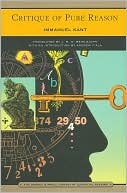Category Books
- Fiction Books & Literature
- Graphic Novels
- Horror
- Mystery & Crime
- Poetry
- Romance Books
- Science Fiction & Fantasy
- Thrillers
- Westerns
- Ages 0-2
- Ages 3-5
- Ages 6-8
- Ages 9-12
- Teens
- Children's Books
- African Americans
- Antiques & Collectibles
- Art, Architecture & Photography
- Bibles & Bible Studies
- Biography
- Business Books
- Christianity
- Computer Books & Technology Books
- Cookbooks, Food & Wine
- Crafts & Hobbies Books
- Education & Teaching
- Engineering
- Entertainment
- Foreign Languages
- Game Books
- Gay & Lesbian
- Health Books, Diet & Fitness Books
- History
- Home & Garden
- Humor Books
- Judaism & Judaica
- Law
- Medical Books
- New Age & Spirituality
- Nonfiction
- Parenting & Family
- Pets
- Philosophy
- Political Books & Current Events Books
- Psychology & Psychotherapy
- Reference
- Religion Books
- Science & Nature
- Self Improvement
- Sex & Relationships
- Social Sciences
- Sports & Adventure
- Study Guides & Test Prep
- Travel
- True Crime
- Weddings
- Women's Studies
Critique of Pure Reason (Barnes & Noble Library of Essential Reading) »

Authors: Immanuel Kant, J. M. D. Meiklejohn (Translator), Andrew Fiala
ISBN-13: 9780760755945, ISBN-10: 0760755949
Format: Paperback
Publisher: Barnes & Noble
Date Published: March 2004
Edition: (Non-applicable)
Author Biography: Immanuel Kant
Howard Caygill is Professor at Goldsmiths College, University of London.
Book Synopsis
The Critique of Pure Reason is one of the most important philosophical texts ever written. Like Copernicus, Kant dared to question the ordinary perspective from which we habitually view the world.
Kant's moderate form of skepticism is known as "transcendental idealism," and its primary tenet is that we cannot know things as they are in themselves because we only know things as they appear to us. His thesis had a monumental influence on the culture of the last two centuries, giving rise to cultural movements and theoretical approaches including: German Idealism, Romanticism, Modernism, Marxism, Existentialism, Psychoanalysis, Structuralism, Post-Structuralism, and even Quantum Physics.
About the Author:
Immanuel Kant (1724-1804) has been caricatured as a stiff German professor, whose Stoic habits were so predictable that the people of Königsberg, his hometown, could set their clocks by his daily walks. Kant's life is best described as a heroic struggle to discover order within chaos or, better, an effort to fix human thought and behavior within it proper limits. He lived and worked during the Enlightenment, a time when political, religious, and intellectual freedom erupted across the Western world
Kenneth R. Winkle
Eric Watkins has done a fine job of abridging the Critique to a manageable size while preserving those sections most often assigned in a survey course, including enough of the Analytic to provide a continuous argument. Students will get a good sense of the whole from the parts he includes. I recommend it enthusiastically.
Table of Contents
| Title Page of First Edition (in replica) | 1 | |
| Title Page of Second Edition (not in replica) | 3 | |
| Motto | 4 | |
| Dedication | 5 | |
| Preface to First Edition | 7 | |
| Preface to Second Edition | 17 | |
| Table of Contents of First Edition | 39 | |
| Introduction | 41 | |
| I | Transcendental Doctrine of Elements | |
| First Pt | Transcendental Aesthetic | 65 |
| Second Pt | Transcendental Logic | 92 |
| First Division | Transcendental Analytic | 102 |
| Second Division | Transcendental Dialectic | 297 |
| II | Transcendental Doctrine of Method | |
| Index | 671 |
Subjects
 Philosophy
Philosophy  European & American Philosophy
European & American PhilosophyNonfiction
 Philosophy
Philosophy  General & Miscellaneous Philosophy
General & Miscellaneous PhilosophyNonfiction
 Philosophy
Philosophy  Major Branches of Philosophical Study
Major Branches of Philosophical StudyPhilosophy
 European & American Philosophy
European & American Philosophy  German Philosophy
German PhilosophyPhilosophy
 General & Miscellaneous Philosophy
General & Miscellaneous Philosophy  General & Miscellaneous
General & MiscellaneousPhilosophy
 Major Branches of Philosophical Study
Major Branches of Philosophical Study  Epistemology (Theory of Knowledge)
Epistemology (Theory of Knowledge)
